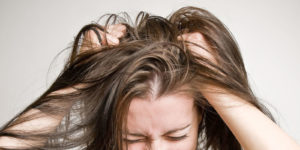
There’s nothing I love more than being outside in the warm weather. I especially love sitting on my deck in the early evening, listening to the woods and watching the fireflies. So peaceful. One thing I don’t love is the dang mosquitos! I have citronella torches and candles, but those buggers seem to find me any way.
I’m not fond of commercial bug repellents because most of them contain DEET (N,N-Diethyl-m-toluamide). It’s designed to repel, rather than kill, insects. Although DEET is approved by the US Environmental Protection Agency (EPA), it is a known eye irritant and can cause rashes, soreness, or blistering when applied to the skin. Additionally, DEET has been linked to neurological problems; according to the EPA, at least 18 different cases of children suffering adverse neurological effects, as well as the deaths of two adults, have been associated with DEET. Researchers at Duke University Medical Center have found that DEET causes diffuse brain cell death and behavioral changes in rats. DEET has been shown to have a negative impact on wildlife and water sources in production and during use. DEET is toxic to birds and aquatic life. DEET has been found in approximately 75 percent of U.S. water sources, including the Mississippi River.
Natural insect repellents are a much safer alternative. And in my opinion, just as effective. Plus they’re super easy to make. Basically, you combine any of the following essential oils in a witch hazel base, and you’ve got a great natural repellent: Citronella, Clove, Lemongrass, Rosemary, Tea Tree, Cajeput, Eucalyptus, Cedar, Catnip, Lavender, Mint, Palmarosa, Pine, Rose Geranium, Lemon Balm, Myrrh.
Here’s how you do it:
Ingredients
Essential oils (see list above)
Natural witch hazel
Distilled or boiled water
Vegetable glycerin (optional)
1. Fill an 8 oz. spray bottle 1/2 full with distilled or boiled water
2. Add witch hazel to fill almost to the top
3. Add 1/2 tsp vegetable glycerin (if using)
4. Add 30-50 drops of essential oils. The more oils you use, the stronger the spray will be.
Other quick fix natural insect repellent ideas:
■Add vanilla extract to the above recipe, or just rub on the skin. You can also mix vanilla with witch hazel and water for a spray version.
■Rub lavender flowers or lavender oil on your skin, especially on hot parts of body (neck, underarms, behind ears, etc.) to repel insects.
■Rub fresh or dried leaves of anything in the mint family all over skin to repel insects (peppermint, spearmint, catnip, pennyroyal, etc. or citronella, lemongrass, etc.) Basil is also said to repel mosquitoes.
What if you do get bitten? Personally I apply our Unscented Herbal Aftershave to the bite and it takes the itch out every time (can’t live without that stuff!). But there are several other remedies to try:
• Apply a simple baking soda and water paste directly to bites and leave on for at least an hour.
• For an anti-itch bath, add ½ to 1 cup baking soda to running lukewarm water and soak for 15 to 20 minutes.
• Apply a drop of lavender or tea tree essential oil directly onto each bite to reduce inflammation and help prevent infection.
• Make a solution of 1 part apple cider vinegar to 3 parts water, and rinse the irritated area. Repeat this procedure several times until the itching decreases in intensity.
• Apply a drop of neem base oil to each bite. Neem is naturally cooling oil with antibacterial properties. It relieves many types of skin irritations.
• A common weed probably growing in your lawn, plantain (Plantago, various species), is one of the best herbs to treat bug bites. To use the plant as first aid for a mosquito bite, crush a few leaves and rub them on to the bite.



- Facebook
- Instagram
- Twitter
- YouTube
- Pinterest
Follow @Honeybee_Grdns